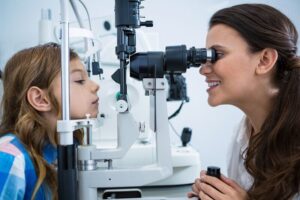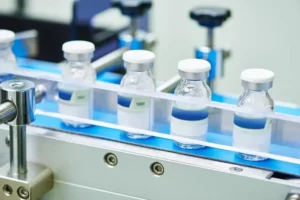What are lipodystrophy and its causes?

Lipodystrophy is a disease characterized by uncontrolled fatty tissue loss, which makes patients look aged and causes severe metabolic disturbances.
Lipodystrophy is a disease that causes people who suffer the uncontrolled loss of introduced adipose tissue, and which was first described in 1885 as a rare disease of premature aging. Years later, it was linked to a metabolic disturbance in fatty tissue, and the health implications were found to be more severe than previously thought.
Adipose tissue, or fatty tissue, is found naturally under the skin, forming a layer that provides consistency and a healthy appearance to our skin, and is also found inside the body, surrounding the viscera to protect them. In addition to accumulating fat, adipose tissue plays an essential role in the synthesis of hormones necessary for our metabolisms’ proper functioning, such as leptin, adiponectin, and various cytokines. Some important functions of these substances are:
- Produce the feeling of satiety, telling the brain that we are no longer hungry.
- Place fat in adipose tissue, preventing it from being deposited in other organs.
- Control the effects of insulin in our body.
- Regulate the destruction of fatty acids to extract energy from them.
- Act as anti-inflammatories by controlling the immune system.
In lipodystrophy, leptin and other substances decrease, and the energy regulation of our body is altered. In this way, our body does not spend the calories from fat where it should, and adipose tissue accumulates in the wrong places (organs, blood, etc.), causing major complications.
Another important aspect of lipodystrophy is that it carries a significant social stigma. The alteration in the distribution of body fat causes aesthetic deformations, giving patients an aged appearance. Several associations of affected people fight so that lipodystrophy is a disease known to society and does not oppose those affected.
Causes of lipodystrophy
The causes of lipodystrophy can be several:
Genetics: there is a group of syndromes characterized by the appearance of lipodystrophy very early in life (around 15 years in most cases). Women are affected four times more than men. In general, in all of them, lipodystrophy is generalized, affecting all body regions and giving adolescents an aging appearance. The mechanisms by which fatty tissue is altered are unknown, but the immune system is thought to be involved.
HIV: probably the cause most often thought to be responsible for lipodystrophy. HIV infection itself does not frequently cause lipodystrophy, but the drugs used to treat AIDS do: antiretrovirals. In this case, lipodystrophy appears in 30% of the people treated and especially affects the face, increasing the social stigma posed by HIV infection even more. However, lipodystrophy cannot always be associated with HIV. Fortunately, newer HIV drugs do not cause lipodystrophy as often.
Insulin injections: Repeated insulin injections in people with diabetes produce local lipodystrophy at the puncture site, usually the fat in the abdomen. This would also happen with repeated injections of any medication at the same puncture site.
Symptoms of lipodystrophy
The symptoms of lipodystrophy can be divided into the physical changes that it involves and its metabolic alterations:
Physical changes
The loss of adipose tissue in certain places is called lipoatrophy, and its accumulation in others is called lipohypertrophy. Both produce alterations in the shape of the body, which vary from one person to another.
- Lipoatrophy: appears on the face, arms and legs. The face will lose volume in the cheeks, marking the cheekbones, and the eyes will be more sunken in their sockets. In the arms and legs, the muscles will be marked, and they will look at malnutrition.
- Lipohypertrophy: fat can accumulate anywhere, but the nape, chin, abdomen, and breasts are common sites. The accumulation of fat on the nape is known as a ‘buffalo hump.’ It is common for men to develop a breast similar to that of women due to fat accumulation.
Metabolic changes
- An increase in cholesterol, triglycerides, and other fats in the blood is a constant change in lipodystrophy. These fats can accumulate in different organs ( liver, pancreas, kidney, etc.).
- Fatty liver: degeneration of the organ occurs over time, which manifests itself with increased transaminases, and even liver cirrhosis.
- Pancreatitis: Sustained hypertriglyceridemia can be the trigger for severe pancreatitis.
- Cardiac and cerebral infarction: cholesterol is deposited in the arteries forming atheroma plaques, thus increasing cardiovascular risk considerably. Heart and brain infarcts are the most frequent, but they can occur in any human body’s arterial branch.
- Type 2 diabetes mellitus: another factor in metabolism that is impaired is glucose control. Insulin resistance usually appears secondary to the increase in pro-inflammatory cytokines, as in obesity.
- Polycystic ovary: it is frequently associated with lipodystrophy; the causes are unknown, although they already share traits of metabolic disorders.
- Chronic kidney disease: chronic kidney damage involves kidney failure that, if not treated in time, reaches the stage of irreparable chronic kidney disease and requires mandatory dialysis treatment.







